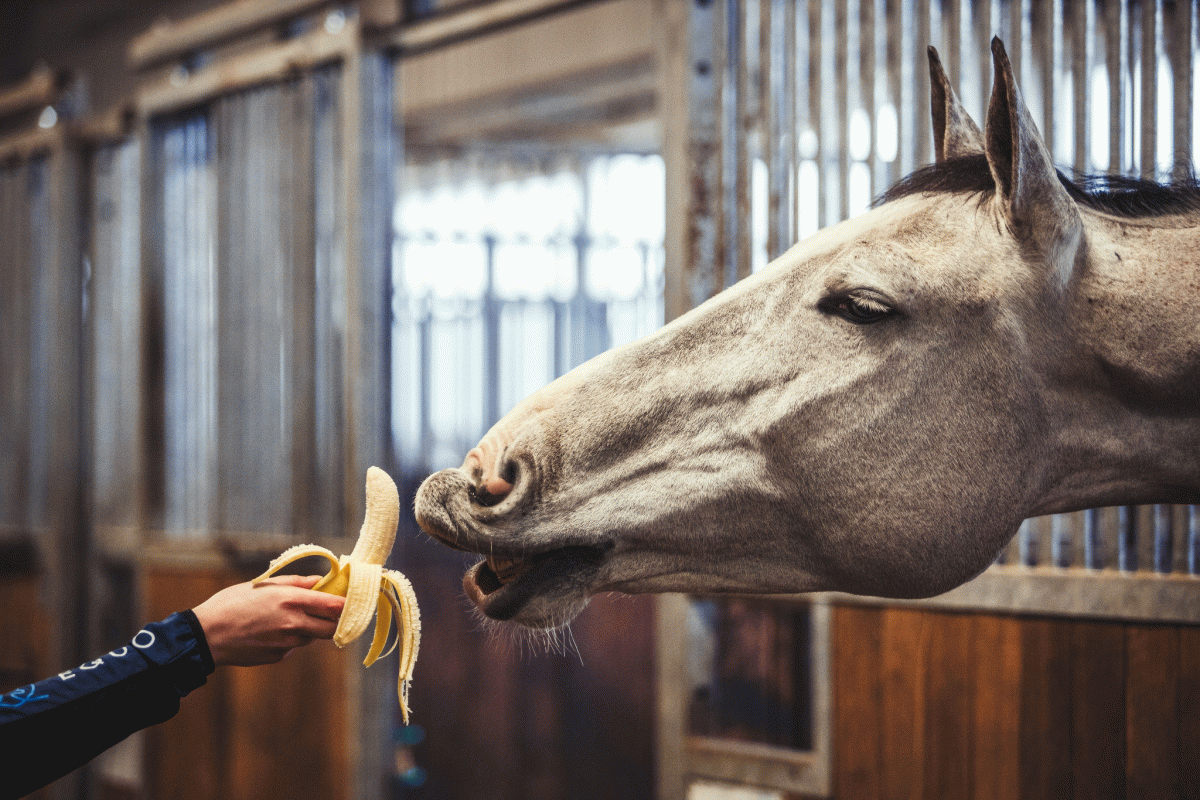
Feeding your horses and making sure they get all the needed nutrients while being happy and well-fed is something that can turn out to be very tricky. Most horse owners have experienced issues with their four-legged partners being either too difficult to feed, or gaining pounds seemingly from nothing. Here is a little guide of things you should not forget while considering your horse’s diet.
Nutrition has three primary roles: to supply energy, to deliver structural components, and to provide protection and nutrients (such as minerals and vitamins). A horse can consume 2,5 – 3 % of its weight in the dry food. It means that a 500 kg horse can eat up to 15 kg of dry mass per day.
Right hay is the foundation of every feeding plan. Horses without any harder work can be fed only with hay, considering it is of good quality. During the drying process, hay loses nutrients, and this fact makes it a low-calorie forage which provides nutrients and satiety.
To make haylage, the grass is cut earlier and later left to wilt, so it is not completely dry like hay. Haylage has a lower percentage of dry mass (it has more moisture), and therefore the feeding dose should be one ¼ more compared to hay. It is usually lower in sugar and higher in protein, and it is not suitable for overweight horses, because when fed with haylage, they tend to gain more weight than while being fed with hay.
Even when your horse lives in a box with plentiful portions of hay, it cannot replace grass and pasture. Horses‘ digestive system is built for a continuous income of food. As your horses will spend around 70 % of their time in paddock grazing, they will promote the healthy functioning of their intestines. Stay alert, though, because if the grass is well-grown and thick, a horse can graze up to 6 kilograms of grass per hour. On the other hand, a horse feeding on short grass in an often-used paddock eats approximately 0,5 kilograms per hour. One kilogram of grass contains up to 75 g of sugar, so it is essential to evaluate which kind of pasture your horses should spend their time off on according to their body type because grass can quickly help them gain extra weight!
A high-energy feed is for horses with a specific workload, where feeding with low-calorie forage is not sufficient. The most numerous compound of high-energy feeds are saccharides serving as the source of energy. The primary natural source of saccharides are grains, mainly oat. Oat itself contains 12 % of fiber, which helps with digestion, and creasing the oat improves its energetic effect of 7 – 10 %. Other natural sources of energy are corn, barley, wheat, or sugar beet, but the latter must not be dried. Dried sugar beet absorbs moisture quickly and subsequently creates pressure in the digestive system.
It is safe to say that horses get most of the vitamins in sufficient doses from a proper diet. If your horses regularly go to pasture, get enough of good-quality hay, and are fed with grains, they get most of the vitamins they need. However, you should consider supplementing some of the vitamins: vitamin C and vitamin E.
Most animals, including horses, produce their own need of vitamin C. But to support the production of collagen and to improve immunity against virus diseases, some horses require artificial supplementation of this vitamin, commonly known as ascorbic acid.
The natural quantity of vitamin E in feed is destroyed during the drying process, so it is suitable to supplement it. The lack of this vitamin causes fertility disorders and muscular dystrophy. Vitamin E is usually served with selenium to prevent muscle disorders. Be careful, though, because a dose of selenium larger than 20 mg/day is toxic for the horse!
Horses can get many of the mineral compounds, such as iron, in ample doses from a natural feed. But some elements should be added to the feed to ensure the right functioning of a horse’s body. For example, calcium and phosphorus. They are stored in bones, and have many vital functions: calcium creates blood clots and contracts muscles, and phosphorus is an essential compound of many acids and enzymes. Sodium and potassium work together to create and transport a neural potential, which means they ensure the smooth functioning of the neural system. Horses get enough sodium from salt licks, and potassium is in a natural feed. However, if a horse sweats more during or after hard work, a lot of minerals are carried away from the body in sweat. To compensate for those eliminated minerals, we use feeding supplements with electrolytes.
Feeding horses is not an easy job, and we know it. That is why you can write down all the feeding info into your horse’s profile in your EQUIMO app. It will count the total amount of calories for you, so you can keep track of the right dosage for your horse, and make sure you do not forget anything. You can also compare the calorie income with your horse’s workload and see whether you should make any adjustments. So…dig in, and good luck!